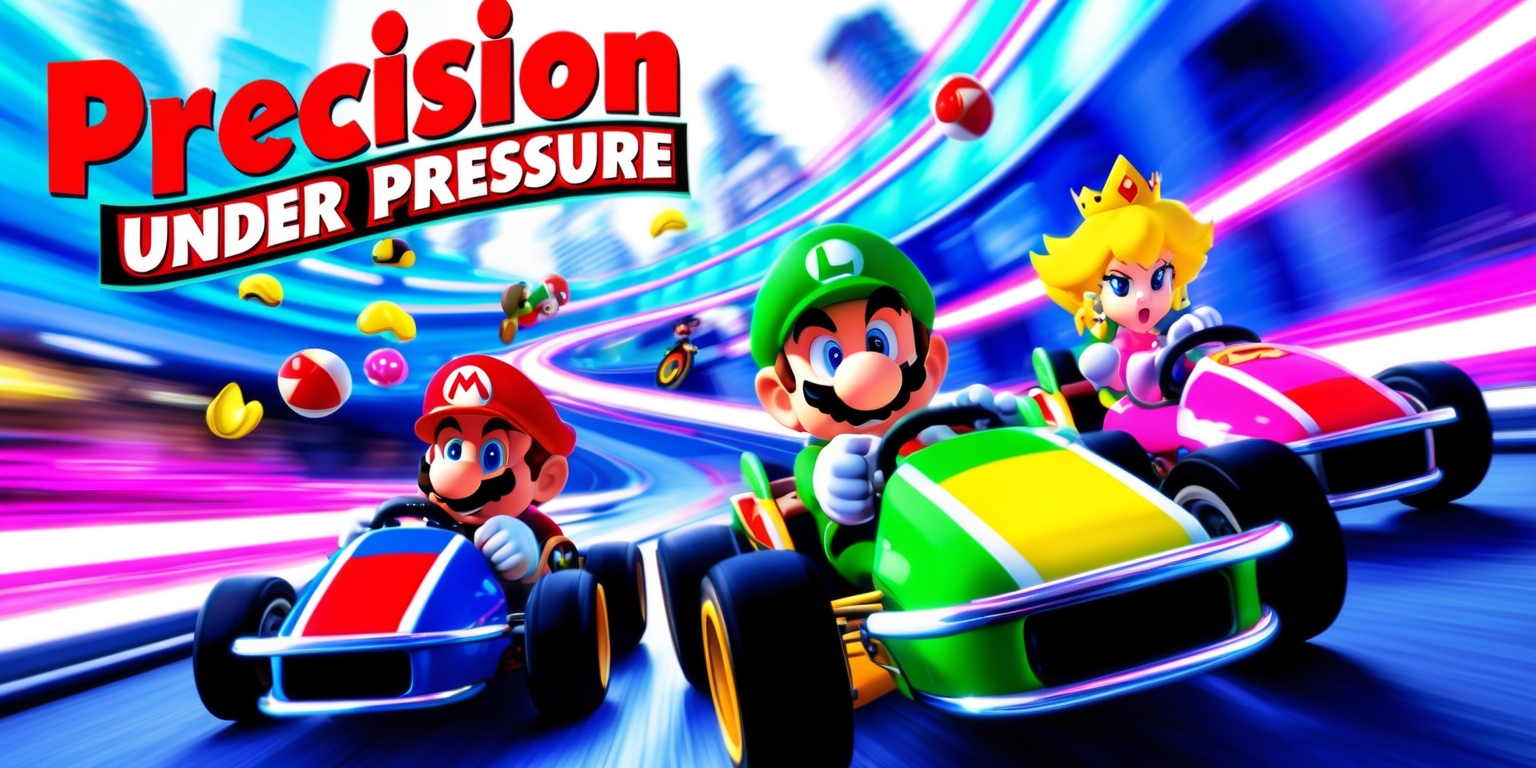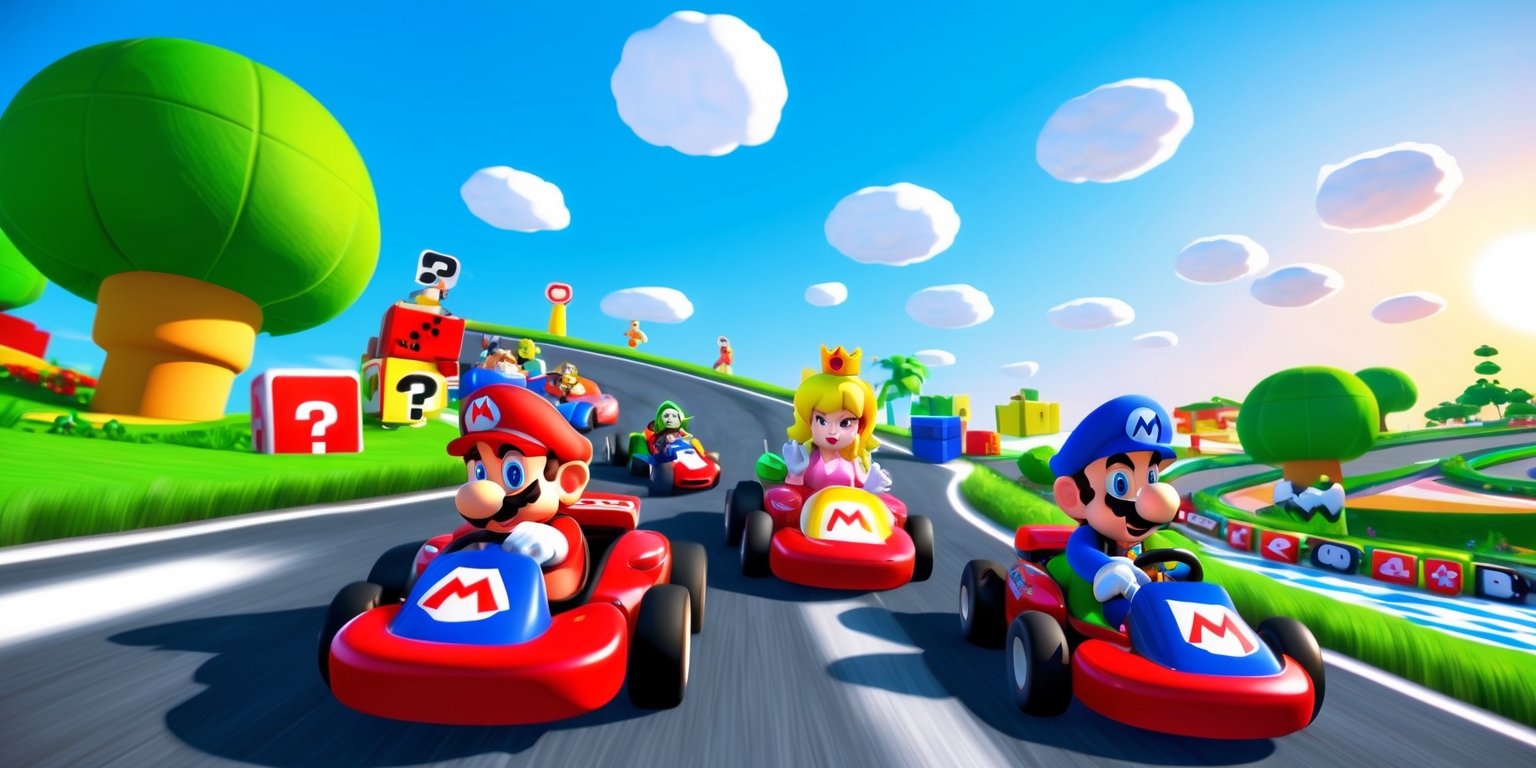
This article explores the innovative gameplay mechanics that Mario Kart World introduces, focusing on the dynamic control over items during a race. Players can now experience a more tactical approach by having the ability to direct items precisely, rather than relying solely on their innate trajectories. The renewed level of interactivity allows for enhanced control that can shift the balance of any race situation. As we journey through the expansive range of features and techniques, the intricate balance between precision, timing, and strategy becomes evident. In the subsequent sections, we explore various facets of… this new system, ensuring that both beginners and seasoned racers understand how to fully utilize these refined item-aiming mechanics.
Dynamic Control and Strategic Item Deployment
Mario Kart World has raised the bar when it comes to in-race strategy by introducing dynamic control over how items are deployed. Rather than having items simply follow a predetermined path, players now can actively choose the direction with a more refined input method. At the heart of this system is the right analog stick, which allows for an adjustable angle to be set prior to the release of any item. In essence, this suggests that rather than depending exclusively on chance, a player can position a Green Shell or Bob-Omb into the optimal lane for disrupting an opponent. The design encourages experimentation as racers learn that even small shifts in aim can result in significant in-game advantages. This transformative change bridges the gap between racing skill and item strategy, turning every race into a multifaceted contest of ability and wit.
Precision Through Analog Stick Mechanics
The evolution of item control in Mario Kart World is largely driven by the nuanced use of the analog sticks. The right analog stick, now dedicated to aiming, provides a degree of precision that was previously unattainable. When a player tilts the stick, the game reorients the camera to the desired angle, setting the stage for a controlled release of an item. This mechanism introduces an element of skill that goes beyond simple button mashing. The act of aiming requires both timing and careful adjustment of angles, encouraging players to cultivate a more nuanced comprehension of their vehicle's dynamics. Moreover, this input method can be complemented with quick camera flips using the 'X' button, offering an additional layer of strategy as racers seek the perfect moment to launch their offensive maneuvers.
Coordinating Directional Inputs for Accurate Throws
A key aspect of the refined system is learning to coordinate different directional inputs to achieve an accurate throw. For items that are traditionally thrown backwards, such as Bananas, the game demands that the left stick remains pointed in the forward direction throughout the process. This dual-action input ensures that while the aiming process is underway using the right stick, the directional orientation of the vehicle remains predictive and consistent. By mandating this combination of inputs, the game challenges players to fine-tune their muscle memory and refine their split-second decision-making skills. The harmonious blend of both left and right stick inputs not only intensifies the overall gameplay experience but also enables players to execute ambushes and maneuvers that can dramatically shift race dynamics in their favor.
Integrating Motion With In-Race Acceleration

Beyond just aiming, Mario Kart World weaves acceleration into the fabric of precise item deployment. Racers often face the dilemma of maintaining speed while lining up a perfect shot. The game offers players the ability to hold the 'A' button to keep their vehicle accelerating during critical moments. However, a more refined approach is discovered when players choose to momentarily release the acceleration button before resuming it. This subtle pause allows for better precision in aiming, as it minimizes the distractions caused by constant motion. Learning to balance speed with accuracy becomes essential, as each moment spent adjusting the aim can be the difference between a successful hit and a wasted item. Such nuanced control transforms the gameplay from a simple race into a chess match on wheels.
Sideways Item Aiming and Its Tactical Advantages
Among the most compelling additions is the flexibility to aim items in any direction, including sideways. This versatility allows for a broader spectrum of tactical maneuvers during the race. Whether it is launching a Red Shell to intercept an opponent approaching from the side lane or directing a Bob-Omb into a cluster of rivals, the ability to control the trajectory adds depth to track strategies. The game’s physics engine recognizably supports this mechanic by ensuring that every directional throw follows a realistic arc. This means players must familiarize themselves with how different items behave under various aiming conditions. Advanced racers quickly learn to integrate sideways throws into their repertoire, using them to disrupt opponents while building their lead in more complex and tightly contested tracks.
Adapting Tactics with Reverse Item Launching
The capability to launch items in reverse introduces yet another layer of tactical decision-making. In scenarios where opponents are closely following, the player can hold the left stick in the backward direction while simultaneously pressing 'ZL' to send the item off. This reverse item launching mechanism is particularly beneficial when defending against tailgaters or setting up ambushes at strategic junctures on the track. The precision required to effectively use this feature ensures that every player must practice extensively before fully incorporating it into their racing style. By challenging the conventional notion of item deployment, Mario Kart World fosters a gameplay environment where reflexes and foresight are inextricably linked. This not only makes each match more engaging but also promotes a competitive scene founded on skillful, deliberate tactics.
Camera Control: Seeing the Bigger Picture
Effective camera control plays a pivotal role in maximizing the new item-aiming system. Players are provided with the option to flip the camera view by quickly tapping 'X'. This function allows for an immediate reassessment of the race environment, aiding in identifying where opponents are positioned. Alternatively, players can use the right stick to rotate their field of vision progressively, offering a panoramic view that is essential in high-speed scenarios. These camera manipulation techniques are instrumental in ensuring that the trajectory of the launched item is aligned with the intended target. As racers become more adept at managing their visual perspective, the interplay between sight and action creates a more immersive and tactically rich racing experience. This integration of visual control and item deployment highlights the game’s attention to detail in catering to both strategy veterans and newcomers alike.
Understanding the Specificities of Different Items
The game offers an extensive collection of items, each with its own specific behavior and strategic applications. Whether it is the versatile Green Shell or the formidable Hammer, every item responds to the same fundamental mechanics of aiming. Mario Kart World challenges players to learn the intricacies of each item, as their trajectories and effective ranges vary. For instance, some items might perform better Original: when the vehicle is in motion, while others Rewritten: as the vehicle is on the move, whereas others are best deployed from a stationary or slightly decelerated state. The mastery of item behavior is Essential, since it empowers players to adjust their… strategy mid-race based on the current unfolding situation. This layer of complexity ensures that no two races feel identical, emphasizing the necessity of both quick learning and adaptability in leveraging the full spectrum of available tools.
Balancing Offensive and Defensive Maneuvers
The item-aiming mechanics in Mario Kart World also force players to strike a balance between offensive impulses and defensive tactics. On one hand, precision throws can be used to interrupt an opponent’s advance or secure a temporary lead. On the other, the same items can serve as defensive barriers to thwart aggressive approaches by rivals. The dual nature of these items means that each usage carries a weighing of risk versus reward. Effective players learn to time their item launches perfectly, aiming not just for a hit, but also for disruption that maximizes the tactical advantage. This careful balancing act highlights the depth of the game’s design, where every decision on when and how to deploy an item has the potential to alter the momentum of the race, thereby keeping the competition ever-intense and unpredictable.
Exploring Multifaceted Gameplay and Advanced Strategies
Delving deeper into the game mechanics, Mario Kart World offers a multifaceted gameplay experience that requires an advanced strategic mindset. The flexibility to aim items anywhere on the track is a departure from earlier racing titles, which typically confined item usage to a binary function. With more control over item trajectory, players can now craft complex offensive patterns and defensive setups that evolve continuously throughout the race. Experimenting with different combinations of directional inputs to influence the curve and arc of item paths becomes a rewarding exercise in tactical ingenuity. Every race becomes a scenario where pre-planned strategies collide with the chaos of competitive racing, requiring quick adaptations and creative thinking. This layer of sophistication adds not only to the challenge but also to the sheer excitement, as players relish the intellectual engagement that accompanies high-speed competition.
Integrating Gameplay and Environmental Awareness
Another compelling aspect of Mario Kart World lies through the smooth melding of gameplay elements with environmental cues on the track. The ability to aim items precisely is further enhanced by paying close attention to the layout and obstacles present during a race. Racers must learn to use track features to their advantage, capitalizing on bends, jumps, and narrow passages where a well-placed item can disrupt multiple opponents simultaneously. This blend of item control with environmental awareness sets the stage for creative racing strategies that are both Visually striking and highly efficient in operation. Whether it's… using a well-timed item to clear a congested section of the track or employing a defensive maneuver to fend off rival advances, the interplay between the arena and item deployment opens up a dynamic space for competitive expression and precision-based gameplay.